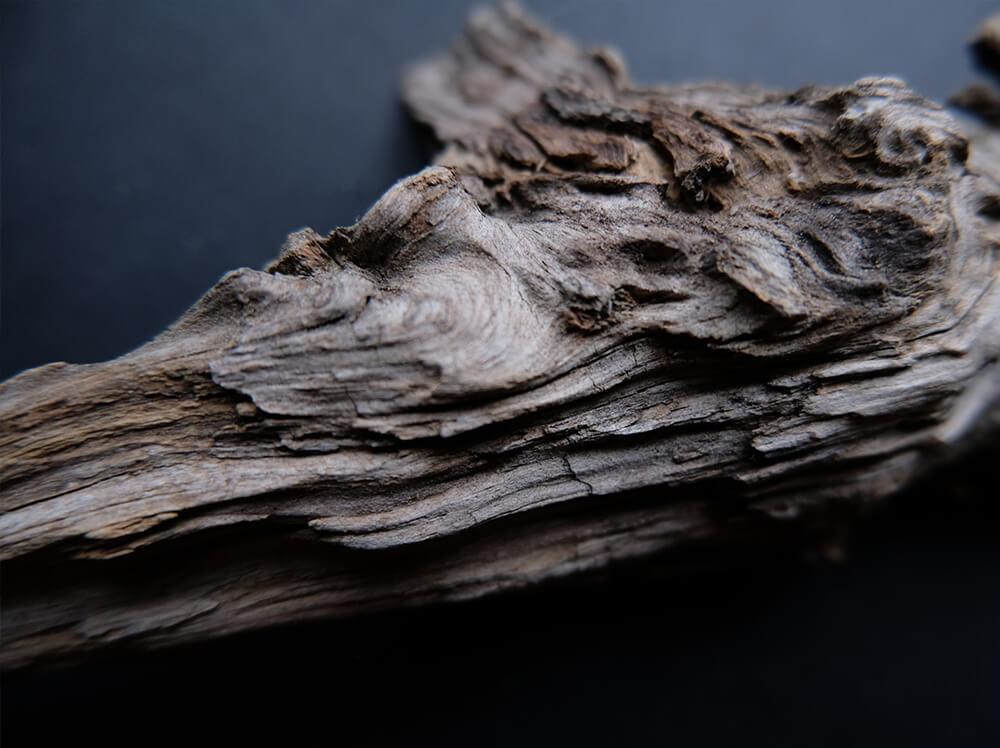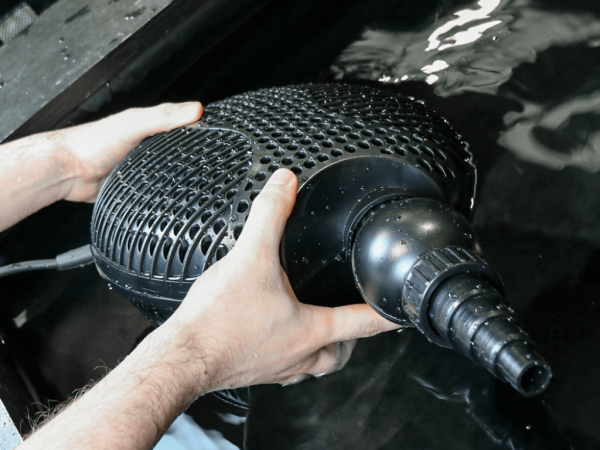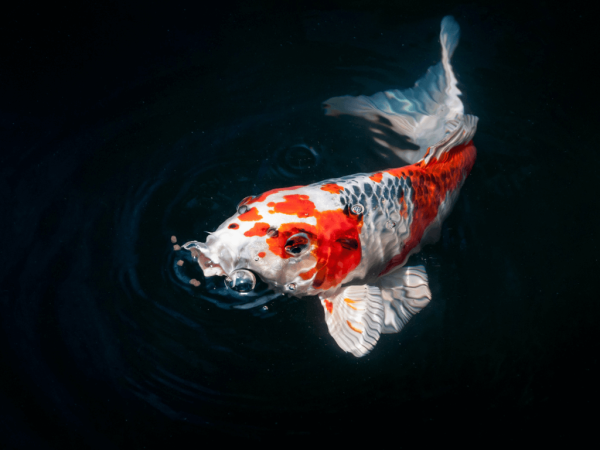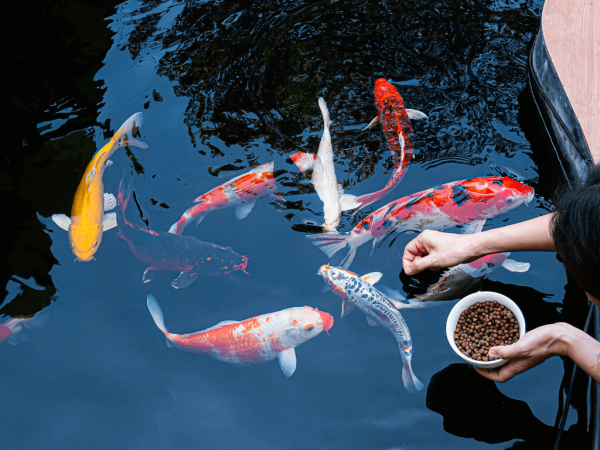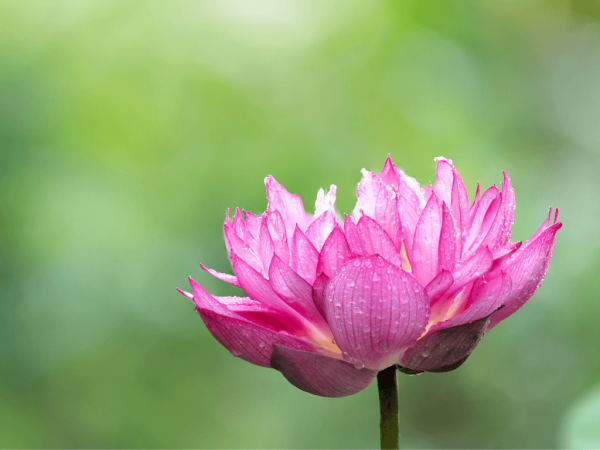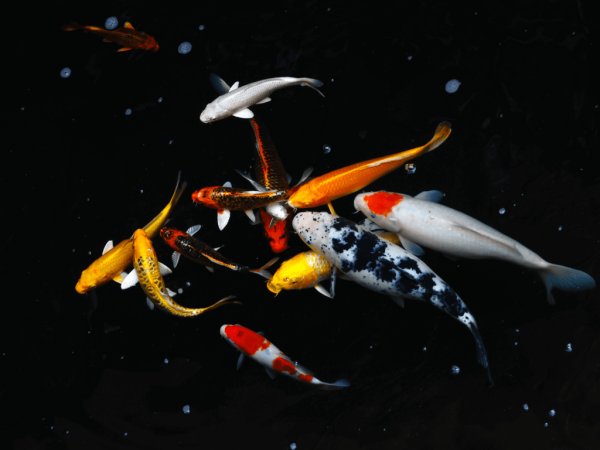Driftwood for aquariums
Some of the most striking freshwater displays in the hobby use aquarium driftwood in their hardscape selection and design, and it’s a very popular decorative material - especially with plants.
It comes in many shapes and sizes and can be used in everything from tiny nano tanks, Betta tanks and Shrimp tanks to biotopes, larger aquariums and public aquaria.
Wood can be found naturally in freshwaters all over the world, and many creatures have adapted to live near to it, breed on it and even graze on it.
Place some driftwood in your aquascape and it can instantly give that natural look, and combine lots of wood with a bed of washed sand and your tank will resemble a river in the Amazon.
Bogwood
is just wood from fallen branches and tree trunks. It would float initially, but over time it takes on water, becomes waterlogged and sinks. Once underwater it’s used by many catfish species to hide under during the day, many of them mimicking the wood pattern and shape as part of their camouflage.
Aquarium driftwood can be made up of hundreds of trees and plants, but select wood from aquascape stores to make sure it’s safe to be submerged with fish. Place it in the tank and it should sink, but some may float for several days before sinking.
If you need it to sink immediately use cable ties to attach large stones underneath it. Place it back in the water and it should sink. If it still floats, you need heavier rocks. Cable ties can be used to attach plants like mosses to driftwood too.
The first thing that many new aquarium wood owners notice is that it turns the water yellow, and then brown, making aquarium water the colour of tea. These tannins are released from the wood and are perfectly natural.
Over time the tannins released will become less and less, but if you want driftwood for aquariums without the discolouration either presoak in a water butt for several weeks prior to adding it to the tank, or add activated carbon to the aquarium filter, which will remove it.
Because of the popularity of aquascaping, the variety of woods available to aquarists is now larger than ever, ranging from dark, chunky pieces like mopani to light, spindly, branching pieces like Azalea, to bonsai. The light coloured branches haven’t been immersed in water, so are likely to float in the aquascape first before sinking after a few days.
Aquascapers prefer attractive looking pieces for creating their planted aquariums, and bracing bars permitted, large pieces can be added for dramatic effect. Stick driftwood out of the water in open-topped tanks or hang it upside down in biotopes to simulate overhanging wood from the forest canopy above.
Try attaching plants like Java ferns, Anubias or Java moss to submerged wood or even Bromeliads to emersed driftwood pieces for that indoor jungle effect.
What kind of driftwood is safe for aquariums?
Some plants and trees are poisonous, meaning that their wood may be too, so don’t risk dumping an unknown piece of decorative driftwood into your tank and it wipes out all your fish. It happens!
You may be tempted to forage for your own wood but unless you can make a positive ID on the tree it came from and can look up to see if it’s safe, don’t use it.
Popular driftwood for aquariums includes Azalea wood, Spider wood, Tiger wood, Mopani wood, Manzanita wood, Redmoor wood, Sumatra wood and Malaysian driftwood, which is the kind most aquarists associate with bogwood.
Manzanita wood is hand-collected by hobbyists in New Mexico, Texas and Oregon in the Southwest United States. It’s popular for its knarled branches but doesn’t grow near to water at all, instead, coming from arid conditions.
Driftwood like Mopani has a characteristic two-tone, with a smooth sandy colour on one side and dark brown gnarly textures on the other.
Some are tree branches and twigs, other are roots, while the traditional bogwood looks like old, knarled tree trunks. Bonsai tree wood has been made from twigs and roots to resemble Bonsai trees.
Attaching plants like moss to them can literally produce a Bonsai tree underwater. Create an underwater bonsai aquascape with plants and it can look like a work of art.
Beware when taking wood from natural water bodies like ponds and rivers. They can harbour parasites and invertebrate larvae which can eat fish eggs and fry.
New woods are discovered for aquarium use and new names are given to them all the time. The only thing to remember is that Swell recommends that all wood is pre-soaked before being used in any aquarium. Better to be safe than sorry.
Is driftwood good for aquariums?
Driftwood can be beneficial to some aquariums in a number of ways. Driftwood makes up a large part of the natural decor in many treelined streams and rivers, and where overhanging plants or sunken driftwood occurs, many fish and invertebrates have evolved over millions of years to make use of it.
Tropical fish like wood catfish have brown, mottled patterns to camouflage them against the wood and help them to blend in. Wood can help them to hide from predators but also to help hide them from their prey.
Other catfish like some sucker-mouthed plecos have actually evolved to rasp away at and eat driftwood, and it makes up part of their natural diet.
Many South American cichlid species lay their eggs on wood, while Altum angelfish have adapted to the dark, soft, acidic, tannins created by tree roots, wood and leaves and occur only in black waters in the wild.
So for lots of fish wood provides somewhere to hide, feed, and breed, and helps to replicate their natural habitat in the wild. Driftwood isn’t suitable for all aquariums however as the tannins contained in the wood soften and acidify aquarium water, making it unsuitable for fish species that require hard, alkaline water.
Fish from freshwater with a high pH like Lake Tanganyika in Africa’s Rift Valley could use the wood to hide and breed amongst, although the risk is that it would acidify the water over time, and lower pH to a level that these fish aren’t naturally adapted to live in.
Lake Tanganyika has very clear water too and great visibility, so any tannins in the water will stain a Rift valley cichlid tank and only mask the natural beauty of the fish, not enhance it as it would for a Rio Negro biotope tank where its fish positively shine in blackwater.
Driftwood would have a negative effect on saltwater aquariums too, for the same reason. So driftwood isn’t good for all aquariums. Most freshwater aquariums will be fine with its addition just as a piece of natural decoration. It’s a mainstay of most biotope tanks where the creators want to mimic a sunken wood habitat, and it’s popular in planted aquariums, aquascaping and Nature Aquariums where ferns and moss attach to it for enhanced beauty and natural effect.
But it’s not suitable for any aquariums where a high pH, and KH are required, or for alkaline-loving fish.
Do I have to boil driftwood for an aquarium?
Boiling driftwood is a good way to make it sink and to remove much of the tannins that would otherwise make the tank water brown. Most driftwood pieces are too large to fit in a saucepan however, and many people would not want to use the same pots and pans they cook their food in, to boil a piece of wood for aquascaping.
A good alternative is to soak it outside for a few weeks before use. Use a vat that’s large enough to fully submerge the piece (like a water butt,) and use bricks to hold it down underwater until it becomes waterlogged, if necessary. Over the next few weeks, the driftwood should sink of its own accord and dump some of the tannins, lessening the amount that it would later release into the aquarium.
How do you make driftwood safe for an aquarium?
Pre-soaking wood does a lot to make it safe for aquarium use. Some driftwood can strip a tank of oxygen when first placed in water, so by soaking it first, if it does lower oxygen levels, your fish will be separate, and alive.
Some wood can even release natural pesticides when first soaked, so again by pre-soaking it outside in a vat that doesn’t contain fish, this can be avoided. If you want to make doubly sure, conduct regular water changes on the vat that the wood is soaking in.
For some species of fish, very spiky aquascaping wood, branches and roots may damage them if they collide with it. Avoid sharp spikes with large, high-bodied, naturally nervous, or skittish fish, scaleless loaches or fast swimmers.
Eyes can be damaged by sharp wood too. Larger, chunky pieces are best for fish safety. Sharp pieces can be snapped, sawn or sanded off if necessary.
Bonsai tree wood is particularly sharp so only create a bonsai tree aquascape with small or no fish. Tiny 2.5cm fish and inverts are about the right size.
Why has my wood gone mouldy?
Not long after setting up your new aquarium, you may be alarmed to find your aquatic art has opaque slime or fluff growing on it. This is natural as most driftwood will have been collected from outside and picked up airborne fungal spores during storage.
The fungus is activated by the warm waters of your aquarium and feeds on what’s left of any living material on the wood, and should pass over time. But if you have lots of driftwood, and lots of fungus, it won’t provide ideal conditions for fish by stripping the water of oxygen, and the wood may start to smell. Here’s how to get rid of it.
Soak it
It’s good practice to soak most driftwood, (especially newly purchased aquascaping wood,) outside. Submerge it in a large vat full of water and if it floats, place a rock on top of it to hold it down.
There it can go mouldy as it naturally would but without harming any fish, and in a few weeks it should be gone. You can then place the presoaked, mould-free wood into your tank.
Boil it
Fungus won’t survive being boiled so if you have a small piece of wood and an understanding family (see above,) you may be able to boil small wood in a pan on the cooker. This will also help it sink and remove some brown tannins at the same time. But boiled wood won’t be on the menu in most kitchens.
Salt
Fungus can’t survive in salt so you could add a small amount of tonic salt to your freshwater aquarium and the fungus should die. Salt can be useful for treating sick fish so it’s worth having some to hand anyway. But just don’t overdo it as live plants won’t do well with it.
Anti Fungus Treatments
Medications used for treating fungus on fish may also work for fungus on driftwood. Treat as if treating the tank for fish fungus and the fungus will go away.
Brush it off
Use an impeller cleaning brush or an old toothbrush to brush the fungus off the wood. It will come off easily, but then ensure that you remove it via a syphon tube afterwards.
Spray it off
Take the aquascaping wood outside and go at it with a jet washer. The fungus will come off in seconds and with luck, it won’t come back.
Leave it
But if it’s only a bit of fungus on a piece of driftwood in a medium to large-sized tank, you could just leave it. The fungus will deplete its food source in a few days and disappear on its own.
Wood grazing catfish like plecos may readily graze it and will come across it naturally in the wild. Add a pleco and they may make the fungus disappear. Shrimp may eat it too.




